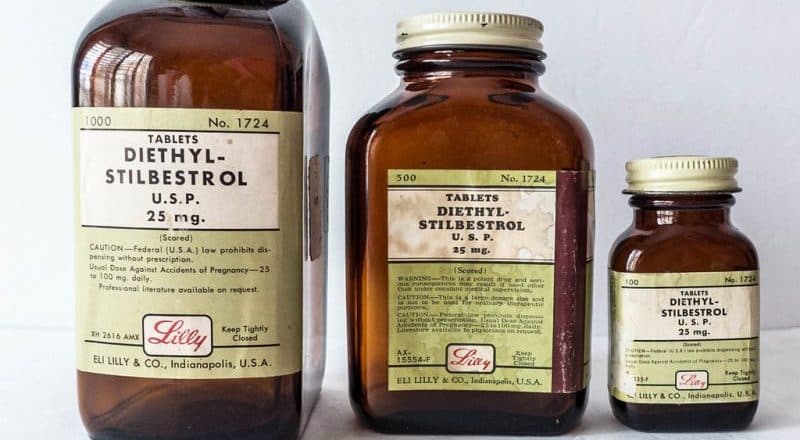The story behind DES daughters, a nickname which became popular around the time that an episode of the “Lou Grant Show” highlighted the issue, goes all the way back to 1938, when scientists developed Diethylstilbestrol. Today, their offspring, and the offspring of their offspring, often suffer from serious health issues that may even be life threatening.
DES Daughters are defined as women born between 1938 and 1971 who were exposed to Diethylstilbestrol, or DES, while in the womb. Research has confirmed that DES Daughters are at an increased risk for: Clear Cell Adenocarcinoma (CCA), a rare kind of vaginal and cervical cancer.
Back in the 1930s, doctors already knew that pregnant women produced estrogen in extremely high levels. So, some theorized that low estrogen might be responsible for many kinds of pregnancy complications, including miscarriage and low birth weight. It must have seemed like a godsend when doctors learned that DES, which had been developed as a menopause treatment, elevated estrogen levels in pregnant women.
But as is so often the case with powerful drugs and pregnant women (antidepressants are a more recent example), doctors did not fully understand what they were dealing with, and the manufacturer did almost nothing to promote safety, because such moves risked decreasing sales. In 1971, a study in the New England Journal of Medicine linked DES with vaginal clear cell adenocarcinoma, which is an aggressive and rare form of cervical cancer.
There are other possible side-effects as well. DES is a teratogen, or a substance that has toxic effects on the uterus. These effects may include permanent infertility and pregnancy complications, such as miscarriage, stillbirth, and preterm labor. Moreover, DES is an obesogen that can trigger severe obesity. And, since DES is an epigenetic drug that changes the genetic code, these effects can linger into the third generation (DES granddaughters).
All these serious side-effects mean that DES daughters often sustain serious losses. Fortunately, there’s an old saying in the law that where there is a wrong, there is also a remedy.
Identifying the Responsible Company
Another basic rule of thumb is that if there is no tortfeasor (negligent actor), there often is no claim for damages. Normally, to obtain compensation, DES daughters must establish that a particular company sold their mother a particular drug a very long time ago, which is a near impossibility.
In these instances, a 1980 case called Sindell v. Abbott Laboratories often comes into play. The market share liability rule applies if the victim/plaintiff can prove that:
- The named defendant is a potential tortfeasor (i.e. may have been the company that sold the drug to the victim’s mother),
- The product is fungible,
- The victim/plaintiff is unable, through no fault of his or her own, to identify the specific tortfeasor, and
- Many of the manufacturers who made the dangerous drug are also named in the lawsuit.
The defendant is liable for a proportional share of damages. For example, if a DES daughter obtains a $12 million judgement against three companies and the market share liability rule applies,each company must pay the victim $4 million.
New York environmental law attorney Paul Napoli, who was interviewed for this article, says this issue comes up frequently in mass tort cases.
Statute of Limitation
Mr. Napoli added that many companies use the statute of limitations to try and have these cases thrown out. In New York, most negligence victims have three years to file a claim for damages following their injury, and it doesn’t take a math whiz to see that 1950 was a lot longer than three years ago.
However, for statute of limitation purposes, the clock did not start ticking when the DES daughter’s mother took the drug, because of the discovery rule. Technically, victim/plaintiffs have three years to file damage claims after:
- They learn about their injuries, and
- They connect the injury with possible negligence.
So, if a DES daughter develops cervical cancer in 2000 and finds out about the connection between the drug and her cancer in 2014, an argument can be made that the statute of limitations does not expire until 2017.
